The Asa Thomson skiff holds quiet appeal. Appreciation for this little skiff comes on slowly but deeply, like true and enduring love. She’s a culmination of a number of elegant and subtle factors that, while not strikingly obvious, come together in a compact craft that is well balanced in look and in feel.Asa Thomson was a New Bedford, Massachusetts, boatbuilder who clearly had a great deal of experience in skiffs. His design, devoid of any “wow” factor, has all the attributes of a craft born of lifelong learning. On a recent outing to Cape Cod, I came across a lovely and well-maintained Asa Thomson skiff that had been impeccably built by Pease Boatworks and Marine Railway in Chatham, Massachusetts. Her name is COOKIE. One look and I wanted a bite.A flag-snapping breeze riffled the surface as my friend and I rowed around Pleasant Bay, near Chatham. In line with what I had noticed while looking at her plans over the years, the Asa Thomson skiff is high-bowed for a boat of such diminutive size. This gives her a jaunty sheer and plenty of freeboard amidships. While this perky little turned-up snout does cause her bow to blow off somewhat, it also provides an added sense of security. My guess is that she was originally designed for clamming, qua-hogging, and fishing around the New Bedford area. The wet-well, located under the ’midship seat, also indicates this use. High, secure-feeling sides and a flat bottom are good for this type of work. The wet-well, which adds strength to the boat, can instead be made to be a dry-well and, rather than stowing an afternoon’s catch, can be used to hold gear or a picnic lunch.
Join The Conversation
We welcome your comments about this article. To include a photo with your remarks, click Choose File below the Comment box.


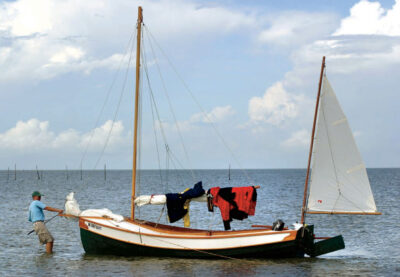
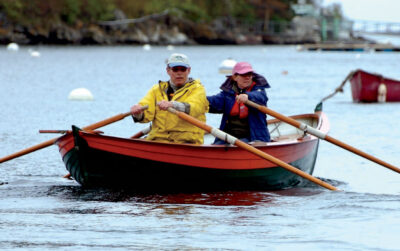
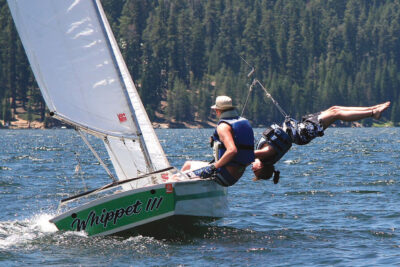
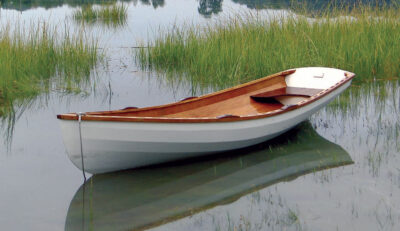

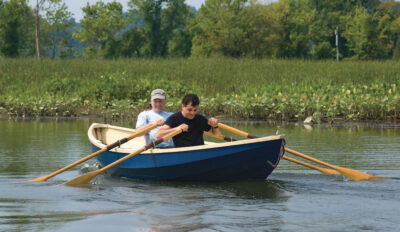

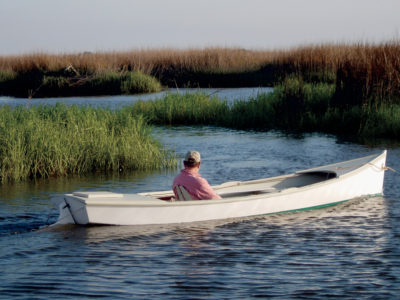
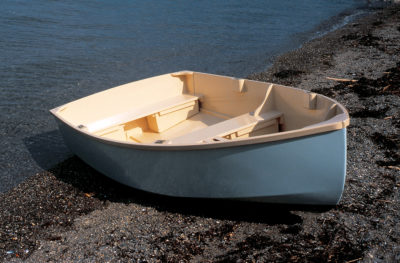
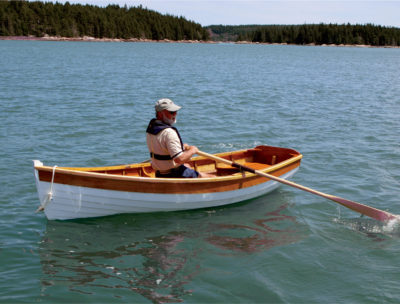
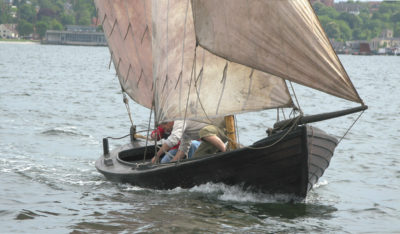
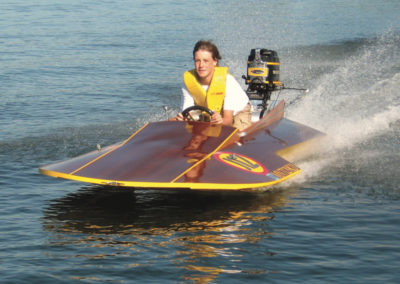
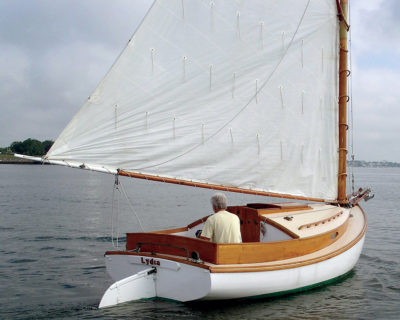
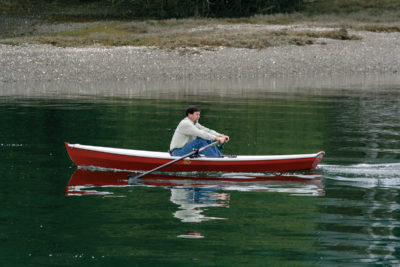
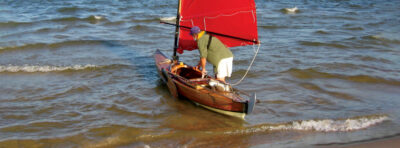
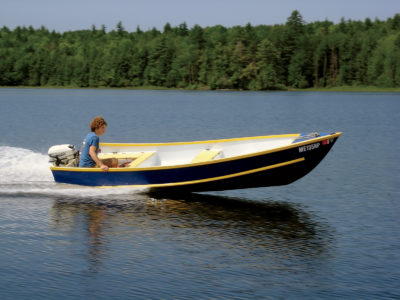
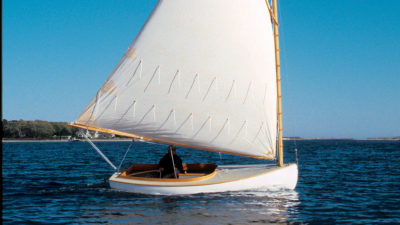


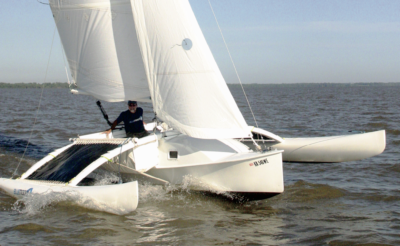
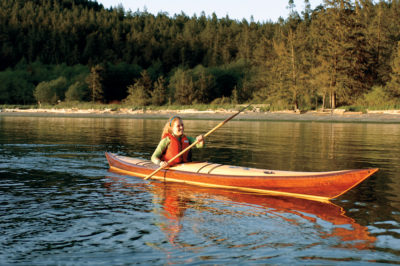
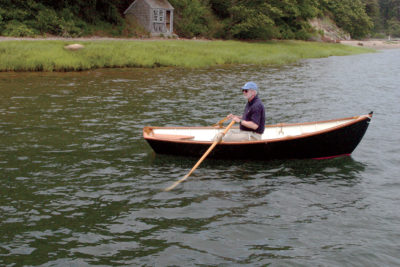
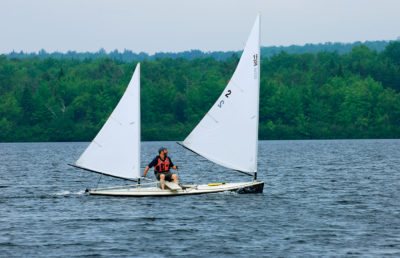

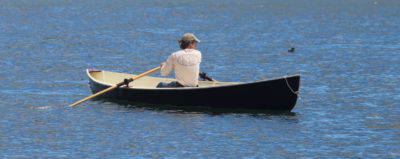
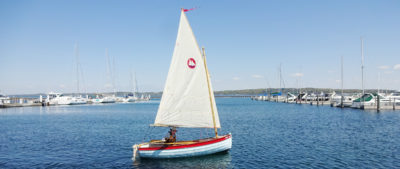
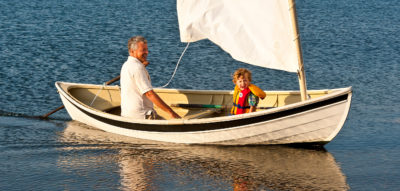
I built this boat from WoodenBoat plans (Yankee tender) more than 20 years ago, principally to get from the dock to my mooring. It indeed is a wonderful rower moving easily through the water. At that time, the plans called for the double cross-planked bottom, which I did, using 3/8″ red cedar for both bottom and strakes. The bottom did hold for 10-12 years but once it started leaking there was no way to dry it up with the stepped layers of planking at the garboard chine. A new bottom of 1/2” plywood has held up since. The only ongoing issue is separation of the external oak keel piece at bow and stern, due, I believe, to the rocker of the bottom exposing the ends to the air at rest. After 26 years of abuse from children, grandchildren, and a crowded dinghy float, she is still going strong.
I would love to see the building plans for this boat.
Could you recommend where I might access them?
Thanks , Rick Lanes
Such evocative lines, in the cutest possible way!
Why don’t you give the boat dimensions?
Here they are:
LOA – 11′ 3″
Beam – 4′ 5″
Weight – 125 – 150 lbs.
I built one a number of years ago, the only changes I made were marine ply bottom and garboards, top two strakes were white cedar. Great little boat, rows very well for a short boat. I sold it for the original owner, I am pretty sure the second owner still has it, as she brought it to the Wellfleet Rowing Rendezvous a couple of years ago, and it was in great shape.
A student of mine built one from the sketchy plans first published in WoodenBoat magazine #30 and #31 in 1979. Nice boat! An original rested in a field in Rockport, Maine for many years. It had an Asa Thompson builder’s plate.
I built an Asa Thomson skiff for my mother in 1985 with only a couple modifications. Since it was a tender in the water all the time, I built a cross-planked bottom instead of the double bottom on the original. It was and still is, a wonderful skiff. Beautiful lines! I restored her in 2016 – had to put a marine plywood bottom on, and I put in a daggerboard and simple spritsail rig and rudder. She is still going strong and is a wonderful rowing and sailing skiff. My mom is 89 now, so she doesn’t go out very often, but I use the boat several times each week still (at over 35 yrs old).